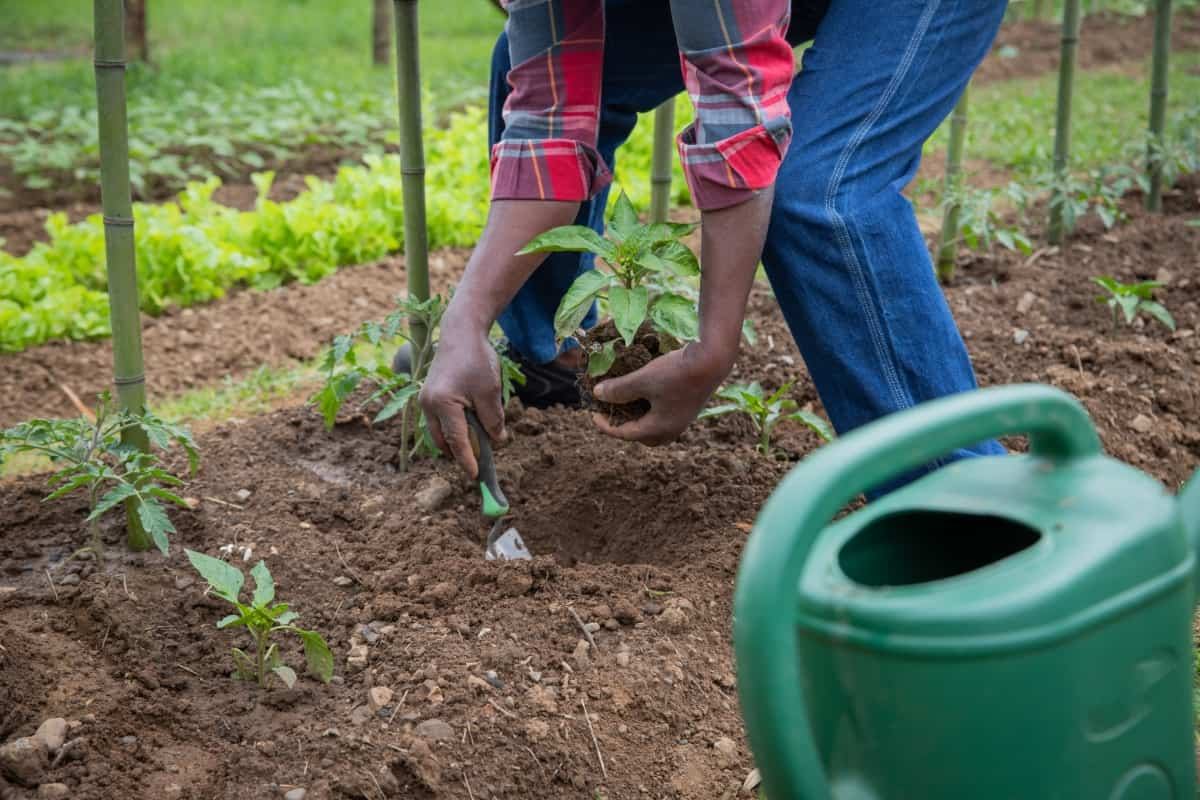In the world of gardening, understanding your local climate is crucial for success. The Zone 11a planting calendar is a vital tool for gardeners in this particular climate zone, providing valuable guidance on the best times to plant a variety of fruits, vegetables, and flowers throughout the year.

This guide is tailored to the unique conditions of Zone 11a, ensuring that gardeners can make the most of their planting seasons. Whether you’re planning your spring vegetable garden, summer fruits, fall flowers, or winter crops, this calendar provides a comprehensive schedule to maximize your garden’s potential.
Planting Calendar for Zone 11a
Understanding Zone 11a
Zone 11a is characterized by its mild winters and extended growing seasons, making it a haven for a wide variety of plants. With minimal frost and warm temperatures, gardeners in Zone 11a have the luxury of growing a diverse range of crops throughout the year. This zone is particularly favorable for tropical and subtropical plants, as well as for extending the growing season of many traditional vegetables and fruits. Understanding the climatic nuances of Zone 11a is key to leveraging its growing potential, enabling gardeners to cultivate a lush and productive garden.
Spring Planting Guide for Zone 11a
Spring in Zone 11a is an ideal time to start planting a variety of vegetables and flowers. During this season, gardeners can sow seeds of tomatoes, peppers, and cucumbers, which thrive in gradually warming temperatures. Leafy greens like spinach, kale, and lettuce also do well in spring, as do root vegetables such as carrots and beets.
For flower enthusiasts, spring is perfect for planting marigolds, petunias, and zinnias, which add vibrant color to any garden. Herbs such as basil, cilantro, and parsley can also be started in spring, providing fresh flavors for the kitchen.
Summer Planting Guide for Zone 11a
The warm summer months in Zone 11a offer a prime opportunity to grow a variety of heat-loving plants. Vegetables like okra, sweet potatoes, and eggplants flourish in high temperatures, as do melons and tropical fruits such as pineapples and mangoes. Summer is also an excellent time to plant heat-tolerant greens like Swiss chard and amaranth.
For a burst of summer color, gardeners can turn to flowers like sunflowers, dahlias, and hibiscus, which thrive in the zone’s sunny conditions. Don’t forget herbs like oregano and thyme, which are well-suited for the hotter months.
Fall Planting Guide for Zone 11a
Fall in Zone 11a is a transitional season that allows for a mix of late summer and early winter crops. You can initiate the growth of cool-season vegetables like broccoli, cauliflower, and Brussels sprouts during the cooler autumn temperatures, concurrently with leafy greens like collards and mustard greens.
In case you missed it: Planting Calendar for Zone 9a: Schedule Vegetables, Fruits, and Flowers in Summer, Winter, Fall, and Spring

Root vegetables like radishes and turnips also do well when planted in the fall. This season is also ideal for planting flowers such as pansies, snapdragons, and chrysanthemums, which add autumnal hues to the garden. Herbs like sage and rosemary can also be planted in the fall, offering aromatic flavors for seasonal cooking.
Winter Planting Guide for Zone 11a
Winter in Zone 11a is mild enough to support a variety of cold-hardy crops. Vegetables such as kale, spinach, and peas can be grown during the cooler months, as can root vegetables like carrots and parsnips. This season is also suitable for growing citrus fruits like oranges and lemons, which appreciate the cooler, but not freezing, temperatures. For color in the winter garden, consider planting flowers like violas, primroses, and calendulas. Winter is also a good time to plant hardy herbs like parsley and cilantro, which can withstand cooler temperatures.
Fruit Planting Calendar for Zone 11a
Zone 11a’s climate is conducive to growing a wide range of fruit trees and plants. Tropical fruits like bananas, papayas, and guavas can be planted, taking full advantage of the zone’s warm temperatures. Citrus fruits, including oranges, lemons, and limes, also thrive in this climate, producing juicy and flavorful fruits. Subtropical fruits such as avocados and passion fruits are well-suited for Zone 11a as well. For gardeners interested in berries, strawberries, raspberries, and blueberries can be successfully grown, provided they are given the right care and conditions.
Vegetable Planting Calendar for Zone 11a
The Zone 11a vegetable planting calendar is a crucial tool for gardeners aiming to grow a diverse and successful vegetable garden. Throughout the year, this calendar guides the planting of various vegetables to ensure they are sown at the most beneficial times. For example, cool-season crops like lettuce, broccoli, and peas are best planted in the milder periods of late winter or early spring.
In case you missed it: Planting Calendar for Zone 2b: Schedule for Vegetables, Fruits, and Flowers in Summer, Winter, Fall, and Spring

As the climate warms, gardeners can shift to planting heat-loving vegetables such as tomatoes, bell peppers, and eggplants. Late summer to early fall is ideal for starting root vegetables like carrots and beets, as well as leafy greens that prefer slightly cooler temperatures. Adhering to this calendar allows gardeners to maximize their harvest and enjoy fresh vegetables throughout the year.
Flower Planting Calendar for Zone 11a
The flower planting calendar for Zone 11a is designed to help gardeners create a continuously blooming garden throughout the year. This calendar suggests the best times to plant a variety of flowers, taking into account the unique climate of Zone 11a. Early spring is perfect for sowing seeds of annuals like petunias and marigolds, as well as perennials such as lupines and coneflowers.
As summer approaches, heat-tolerant flowers like zinnias, cosmos, and sunflowers can be planted to add vibrant colors to the garden. Fall is a great time to plant bulbs like daffodils and tulips for spring blooms, as well as cool-weather flowers like pansies and snapdragons. Even in winter, the mild climate allows for the cultivation of certain flowers, ensuring that the garden remains lively and colorful year-round.
Planting Schedule for Different Seasons for Zone 11a
| Season | Vegetables | Fruits | Flowers | Herbs |
| Spring | Tomatoes, Peppers, Cucumbers, Carrots, Beets, Lettuce, Spinach, Kale, Radishes | Strawberries, Blueberries, Raspberries | Marigolds, Petunias, Zinnias, Pansies, Snapdragons, Lupines | Basil, Cilantro, Parsley, Dill |
| Summer | Okra, Sweet Potatoes, Eggplants, Green Beans, Corn, Zucchini, Bell Peppers | Pineapples, Mangoes, Papayas, Avocados, Melons | Sunflowers, Dahlias, Hibiscus, Cosmos, Lavender, Coneflowers | Oregano, Thyme, Mint, Rosemary |
| Fall | Broccoli, Cauliflower, Brussels Sprouts, Collards, Mustard Greens, Turnips, Radishes | Pears, Apples, Figs, Persimmons | Pansies, Chrysanthemums, Asters, Marigolds, Calendula, Nasturtiums | Sage, Rosemary, Thyme, Fennel |
| Winter | Kale, Spinach, Peas, Carrots, Parsnips, Onions, Garlic | Oranges, Lemons, Tangerines, Grapefruits | Violas, Primroses, Camellias, Cyclamens, Dianthus, Alyssum | Parsley, Cilantro, Chives, Lavender |
In case you missed it: Planting Calendar for Zone 5a: Schedule Vegetables, Fruits, and Flowers in Summer, Winter, Fall, and Spring

Conclusion
The Zone 11a planting calendar is an indispensable guide for gardeners in this unique climatic region. By understanding the best times to plant various fruits, vegetables, and flowers, gardeners can optimize their gardens for continuous growth and harvest.
Whether you’re a seasoned gardener or a beginner, this calendar serves as a roadmap to a thriving and productive garden filled with fresh produce and vibrant blooms throughout the year. With careful planning and adherence to this schedule, your garden in Zone 11a can become a flourishing oasis, providing both beauty and sustenance.
- Feed Your Flock for Less: Top 10 Tips to Save on Chicken Feed
- Ultimate Guide to Ossabaw Island Hog: Breeding, Raising, Diet, and Care
- Hatching Answers: The Top 10 Reasons Your Chickens Aren’t Laying Eggs
- Eggs and Economics: Breaking Down the Cost of Raising Backyard Chickens
- Defend Your Greens: Proven Methods to Keep Iguanas Out of Your Garden
- Ultimate Guide to Cinnamon Queen Chicken: A Comprehensive Guide for Beginners
- Ultimate Guide to California Tan Chicken: Breeding, Raising, Diet, Egg-Production and Care
- Ultimate Guide to Marsh Daisy Chicken: Breeding, Raising, Diet, and Care
- 10 Types of Chicken Farming Businesses You Can Start for Profits